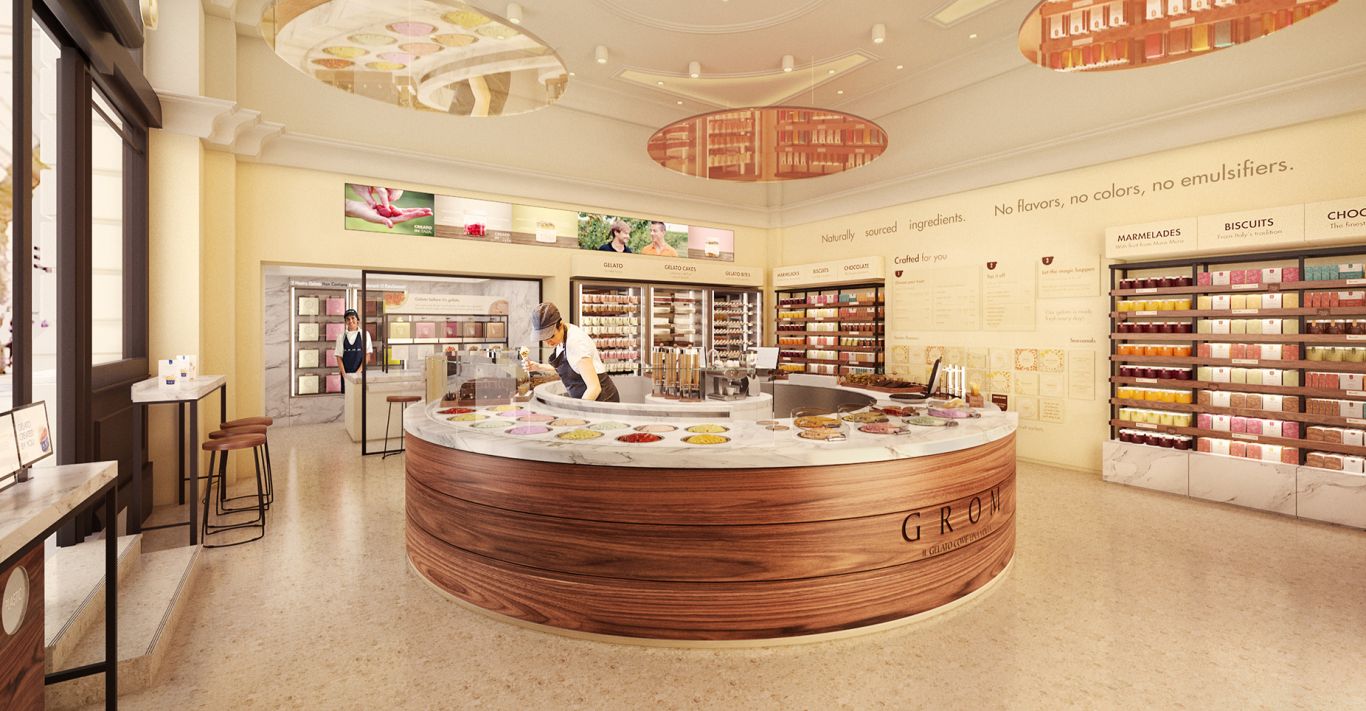WORDS
Chris Madigan
‘Please don’t call it ice cream,’ says Federico Grom. ‘It is gelato – and that is different.’ It’s not simply a case of pretentious foodies wanting to practise their (OK, our) Italiano. As Grom, who has just opened a new branch of his chain of gelateria in Piccadilly, discovered when he exported his product for the first time – to the US – the recipes are completely different. Gelato containing far less air, for example, making it much smoother.
Just as there is a qualitative difference between ice cream and gelato, there is a step up from most gelato to Grom, whose slogan (‘Il gelato come una volta’) means ‘gelato as it used to be’. The ingredients for Grom’s Crema flavour, for example, include free-range eggs, Piedmont milk and cream, and a light grating of Sicilian lemon zest – no additives of any kind. The cones and biscuit pieces in some flavours are gluten-free and produced by Grom’s own bakery. And the fruit flavours are seasonal – you won’t get strawberry in November or pear in July, because they will only use fresh fruit.
The idea for the brand began in 2002 when an old national service buddy of Grom’s, Guido Martinetti, read an article by Carlo Petrini, in which the Slow Food founder asserted that standards of the frozen treat had slipped so badly, there was only one proper gelateria left in Italy. Martinetti made a pilgrimage to the shop in Umbria and came back full of enthusiasm to pitch to his friend, a successful businessman, the idea of a similar gelateria in Turin.
Within a year, the first shop opened to queues down the street and Slow Food approval in another article by Petrini. By 2007, there were nine shops in Italy, and the duo made their first foray abroad to New York. They learnt that their quality levels were not only unusual in their gelato. ‘Our sorbet is 50 per cent fruit – and that is too much fruit to be classified as sorbet in the US, so it had to be imported as jam,’ explains Grom.
It is arguably Grom’s sorbets that are the clearest expression of the philosophy. Both Grom and Martinetti are obsessed with detail. Martinetti runs the company’s organic farm, Mura Mura, located in the Langhe – the area of Piedmont between Asti and Alba, south east of Turin, famous for white truffles and wines such as Barolo and Barbaresco. There, he grows peaches, apricots, pears and figs – enough for all the Grom stores in the world. ‘Most fruits are grown first and foremost for aesthetics, so they look good in supermarkets,’ says Martinetti. ‘That is not important to us – we grow for flavour and texture.’
Federico Grom (it was Martinetti who insisted on naming the firm after his colleague, because the unusual name, from the Trieste region, would be more memorable) is more at home among the hi-tech machinery of the Grom laboratory in the suburbs of Turin. This is the only place Grom gelato is made, before being shipped in refrigerated bags to Rome, Hong Kong, Dubai, London or wherever. It finally becomes gelato or sorbet when it is churned (at a set temperature, speed and aeration level) in front of the customer in the shop. The result of this melding of traditional agriculture and cutting-edge technology is not so much gelato like it used to be, but gelato as you’ve never tasted it before.
Grom Gelateria London is on the corner of Piccadilly and Air Street, close to Piccadilly Circus. Grom in a tub is available in selected Waitrose stores and Ocado; grom.it





